
As the weather gets warmer and the days get longer, you will surely need a place to get out of the sun. A great way to beat the heat this summer is by spending time in your living room: watching a movie, listening to music or playing the latest video game release. If you are going to be spending hours in your home theatre room this summer, however, you may want to consider an upgrade to your setup.
Your setup today may consist of nothing more than a television on a stand. I don’t blame you; it can be intimidating. If you’ve looked for a place to start when envisioning your perfect home theatre setup, you have come to the right place. The perfect home theatre setup for you is just a quick plan away.
Upgrading your audio with a sound bar
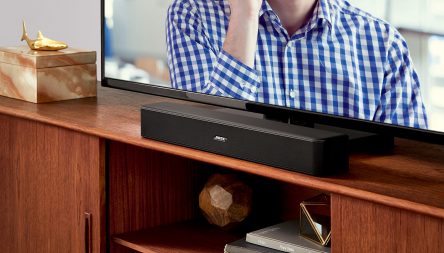
You may be at a point in your home theatre journey where you want an upgrade to your television speakers, but you don’t want to break the bank. The simplest home theatre upgrade that you can make is to grab a small sound bar like the Bose Solo 5 TV Sound System. As televisions have gotten smaller and smaller, there’s less space to fit the speaker drivers within the screen. If you’ve recently upgraded to a new 4K television, you may want to make a similar investment in sound to match. Sound bars are the easiest solution.
Sound bars are a single device (or a single speaker with an added subwoofer for low-frequency sounds) that connects to your TV with one cable. Sound bars, especially the smaller units, integrate very well under a television on a stand or a mount and easily boost the sound emanating from your TV. However, if you have a beautiful television and you’re ready for a big change to your home entertainment experience, you may want to start with a more robust home theatre setup. Assuming that you already have your devices (like an Apple TV 4K or an Xbox One X) and your television, you can start your search by looking at all-in-one solutions like a Home-Theatre-in-a-Box.
Home-Theatre-in-a-Box
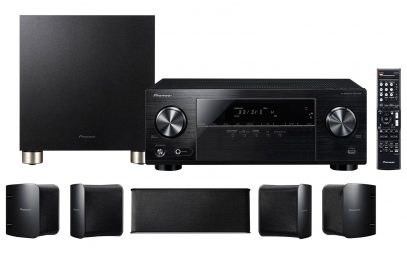
Instead of dealing with buying each audio component individually, you can opt for complete system like the Pioneer HTP-074 5.1 Channel 4K ULTRA AVR Home Theatre System. Within that “Home-Theatre-in-a-Box”, you’ll get a receiver, speakers, a subwoofer and a remote. If you’re watching a movie like John Wick or playing a video game like God of War where the direction of the sound is very important, these systems can add a richer and more positional sound that surrounds you.
Just know that when you move from a sound bar to a system in a box or even a completely piecemeal system (where you pick the receiver and speakers/subwoofer(s) independently), you have a few more variables to consider.
Receiver and speakers options
The two main components in any home theatre system are the receiver and the speakers. Receivers are sometimes referred to as stereo receivers or surround receivers and are the heart of your home theatre system. Your receiver of choice will take in your audio/video devices, boost their signal and send the sound to your speakers. Your speakers will deliver the sound to you.
Regardless if you pick a ready-made solution or want to customize your own system, you have a lot of different options. Without going deep on all of those options in this beginner’s guide, you should begin with three simple questions to set you on the right course:
- How many audio channels or speakers do I want?
- What type of speakers do I want or have room for?
- What does Dolby Atmos mean?
How many channels to choose for home theatre?
When buying a new home theatre solution, you’ll typically see a number alongside the brand and the model number of the system that you’re buying. Numbers like 2.1, 5.1 and 7.2 are quite common; these numbers delineate the number of speakers that your receiver will support. A 2.1 system will support two speakers and a subwoofer while a 7.2 system will support up to seven speakers and two subwoofers. When you opt for more speakers, you get a better sound, but at the same time, your system will take up more room, use more power and cost more.
Speaker Types
In addition to selecting the number of speakers, you will also have to choose between the different form factors for your speakers.

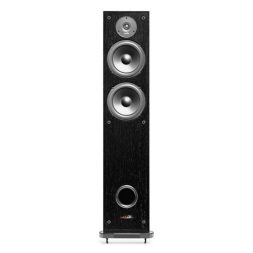
Most commonly, you will be selecting between a bookshelf speaker or a tower speaker. Bookshelf speakers like the Polk Audio R150, for instance, have a smaller footprint at about 4 pounds each and can be mounted/placed more discreetly in the room. However, they may not provide the volume and output you desire in a bigger room. Tower speakers like the Polk Audio R50 pictured above, take up more square footage but can deliver more sound (specifically more bass) to your room. They typically cost more on average than a bookshelf speaker. These aren’t hard and fast rules, however.
If you’re curious, fellow contributor Jeff Wilson wrote a post explaining the science behind speaker loudness.
What is Dolby Atmos?
The final of the three starting questions deals with Dolby Atmos, a new technology that has become more prevalent in home theatre audio over the past few years. In short, Dolby Atmos adds a whole new dimension to sound by mapping individual sound to up to 128 “sound objects” instead of being limited to the amount of channels in your home theatre system. Additionally, a Dolby Atmos setup projects sound in a three-dimensional space around you, including overhead.

Irrespective of the desires you have for your home theatre system, just know that you have options at all budget ranges.
Don’t forget about the room and furniture!
Before you start to go shopping for your new home theatre audio system, you may also want to plot out what’s possible in your living room. If you’re using a smaller area, you may not be able to fit a 7.2-channel surround sound system complete with seven tower speakers and two subwoofers.
Not only that, but where do you run the cables? When you opt for a 5.1 channel system, for example, you have to envision where your speakers will physically be placed. Especially you rear speakers as you’ll need to run speaker wire from your receiver to the speaker. There are a variety of solutions, but two of the easiest ways to solve the problem is by running the wire along your baseboards or under a rug.

Finally, furniture will also be another very important aspect of your home theater. Best Buy offers a variety of furniture options including the Valencia Home Theatre Seating; seating that truly puts the “theatre” in home theatre. Fellow blogger Erin recently reviewed Valencia’s setup by testing the three-chair configuration in her home. read all about it here.

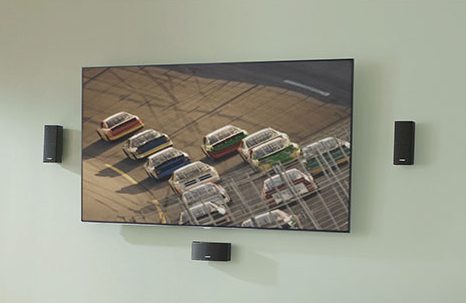

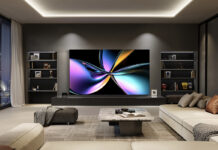

Prices of the audio system
Comments are closed.